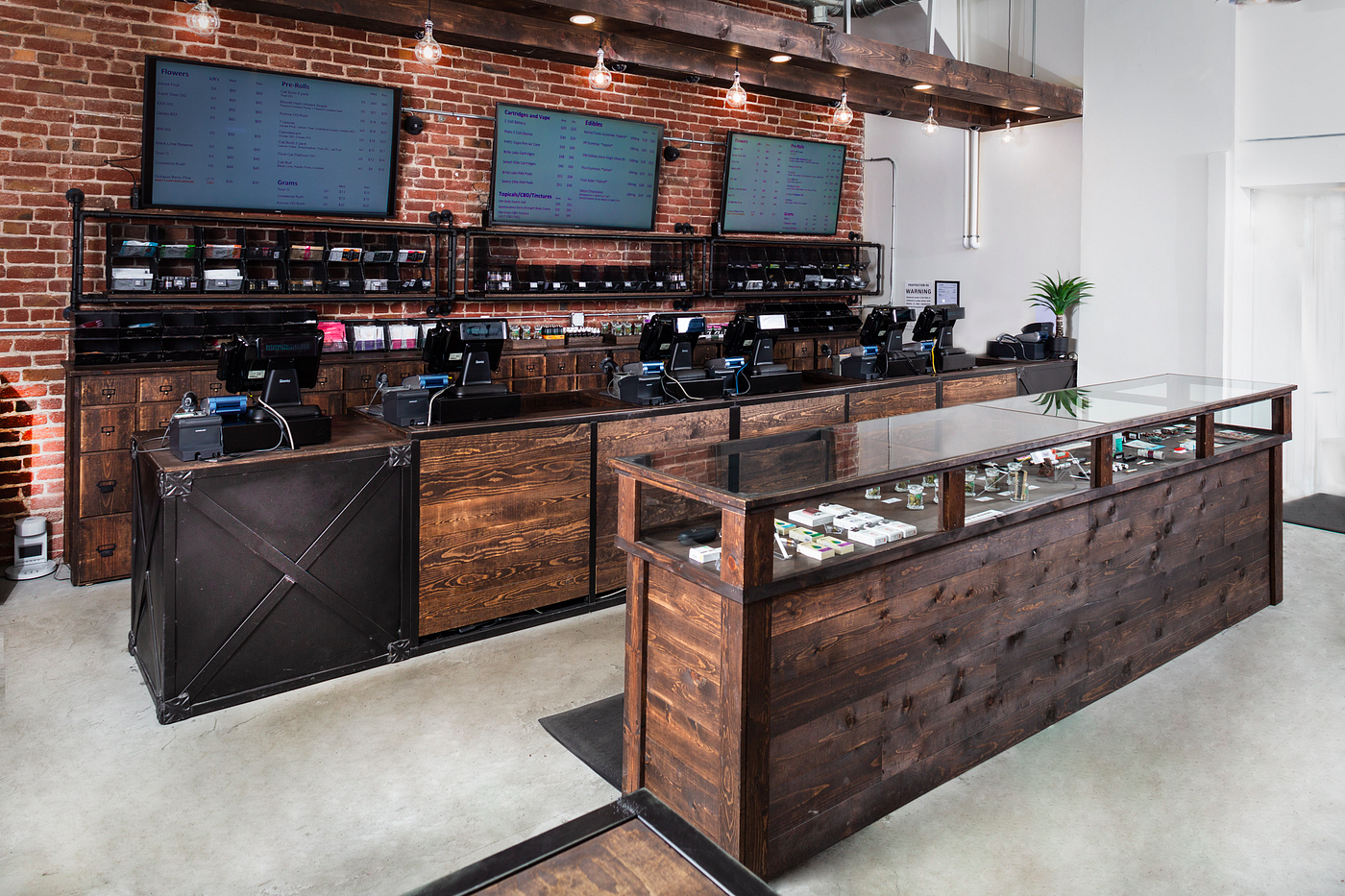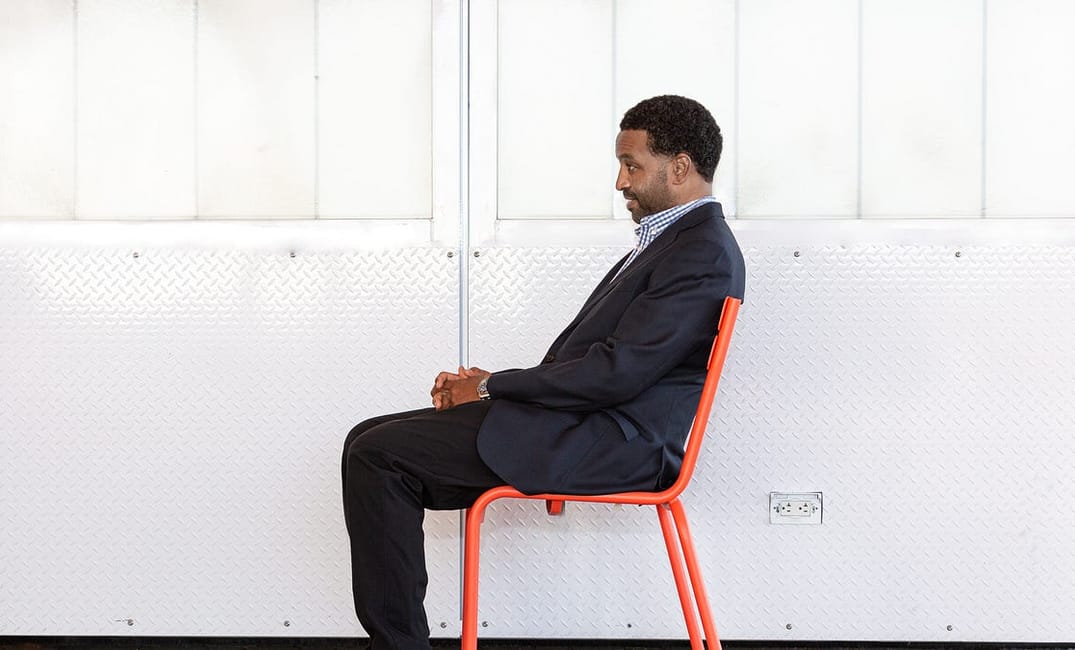Bold Bay Areans

Bold Bay Areans is a series from TBI featuring locals living boldly whom you should know about. If you would like to nominate someone, send us an email or DM us on Twitter or Instagram.
Oakland’s Purple Heart is one of the first dispensaries I ever visited after getting my medical marijuana card in 2011. Back then, cannabis stores didn’t flank every other corner of the city like they do now. I don’t even recall how I found the place, but as someone just starting her weed journey at the time, the unassuming storefront near Jack London Square balanced a professional yet accessible vibe that put me at ease. At the time, I didn’t realize the store’s history as Oakland’s longest-operating marijuana retailer and the fourth-oldest, still operating cannabis business in America.
And it was only very recently that I learned the store’s owner is a 52-year-old Black man, Keith Stephenson. As a writer who often covers the intersection of cannabis and racial justice, as well as Oakland’s broader influence on the industry, I was surprised I hadn’t heard of him before.
Why the low profile, I wondered?
“I like my anonymity,” Stephenson tells me in our recent conversation over Zoom. “I didn’t really come for the fame. I came to change lives and do phenomenal things in the space.”
That he has. Since 2006, Stephenson has been a significant player in Oakland’s regulated cannabis industry, making contributions that have reverberated across California and in legal markets around the country. In an industry known for being overwhelmingly white, the idea of racial equity has become a national point of conversation and certainly a big one in California, where multiple cities have implemented programs to make sure those affected by the war on drugs have opportunities in the legal market. That’s why I’ve found that honoring Black milestones through the stories of industry pioneers like Wanda James, Alphonso “Tucky” Blunt, and Sue Taylor, among others, has become as much about documenting history as representation.
While news of Black people opening cannabis businesses gets a lot of attention these days, the landscape was very different when Stephenson won his license for a medical marijuana store in May 2006. California had become the first state to legalize medical cannabis just 10 years prior, which meant the consumer base centered around patients, not adults ages 21 and up looking for recreational use, like today. Back then, there were significantly fewer cannabis shops and less media focus on the industry’s multibillion-dollar potential.
Sign up for The Bold Italic newsletter to get the best of the Bay Area in your inbox every week.
Becoming the first Black person to get a license meant being the only Black person at industry events and having to contend with vendors unwilling to work with him. It also meant being cautious about doing anything public facing, given that the public perception of marijuana wasn’t as accepting as it is today.
“You have a Black man operating the business that’s federally illegal, and I just didn’t want to stand up on a platform like my white counterparts were able to,” Stephenson explains. “Because Black folks, we’re the first to take the brunt of everything that’s uncomfortable, that’s debilitating, that’s life-altering and impacting. I wasn’t going to sign up for that.”
Stephenson admits he didn’t fully know what he was signing up for when he decided to pursue his own cannabis business — he just knew he wanted in. The native of South Central Los Angeles had enjoyed marijuana since he was a teenager, unaware until years later that it could provide pain relief for his juvenile arthritis.
“I could have chronic pain, consume cannabis, and do 75 pushups and 100 dips straight in a gym,” Stephenson says. “At the time, there was no efficacy of really understanding plant-based medicine. It was just ‘you know what, this makes me feel pretty good.’”
Following his initial dream of becoming a pilot, Stephenson moved up north to the Bay Area in the late 1980s to work as an aviation maintenance technician for a major airline. For 17 years, he did back-breaking work in an industry guided by federal oversight, making his cannabis use a liability. “I couldn’t consume cannabis, because there was drug testing at that point, and there’s no federal protection for Department of Transportation workers,” Stephenson explains.
Once California ushered in its medical cannabis program in the mid-1990s, Stephenson’s rheumatologist signed a recommendation granting him access to the medicine while also offering “slight protections from being arrested in Oakland,” he says. When Stephenson started moonlighting at Oakland’s Cannabis Buyer’s Cooperative, the city’s first medical cannabis dispensary, he became hooked on the business side.
“It gave me a look inside the industry, and I liked it,” he says. “I looked for every opportunity to be in this space at the level of being a business owner.”
That was in 1996. The real opportunity wouldn’t come until 2004, when Oakland opened up licensing to enable more operators to enter the space. That’s when Stephenson found himself at a crossroads: walk away from a secure livelihood with benefits, or follow his passion toward a nascent industry that was federally illegal?
“[The feds] were arresting people back then,” he says of those volatile early days. “Some people are still in jail to this day for things that occurred back then. And let’s be honest, I’m a Black man — we always go to jail first, whether innocent or guilty.”
But according to Stephenson, “Eventually the exposure outweighed the risk.” He made the decision to apply for a license, only to be derailed by an emergency surgery. By this time he’d started exploring cannabis cultivation, and while off from work and recovering, Stephenson spent his time growing plants, selling the flower to dispensaries, and setting the stage to self-fund his future business.
“I didn’t have a ton of money. I had some savings. I took equity out of my home. I cashed in a little stock that I had, and I used 75 pounds that I grew in my basement at the time,” he says.
Two years after the surgery and a decade after falling in love with the industry, “I had the opportunity to apply, and I became the fifth licensed medical cannabis dispensary in the city,” Stephenson says, adding that out of the four dispensaries that opened before Purple Heart, “none are around.”
After voters approved Measure Z in November 2004, private adult cannabis use became the city’s lowest law enforcement priority, and Oakland became the first U.S. city to create a system for the licensing, taxation, and regulation of cannabis under California law. On becoming the industry’s first Black owner, Stephenson says, “I never wanted to be the only one, and I had no idea that it was going to be what it is now. That allowed me to just really lean into it.”
His ownership stake became a direct challenge to the industry’s tendency of relegating Black employees to the role of security guard. “You’ve got a diverse community, but you’ve got an all-white staff, and you only use Blacks in a position of alleviating the threat,” he says of the prevailing mindset at the time. “I was going to change it.”
And change it he did. Oakland officials tapped Purple Heart as one of the first dispensaries to test cannabis flower for safety — a process through which Stephenson recalls “seeing E. coli, fecal matter, mold spores, just a myriad of things that you can’t see with the naked eye.” The move would result in Purple Heart establishing its own lab testing standards while also helping shape standards for Oakland, Berkeley, and eventually the rest of the state.

While never incarcerated himself, Stephenson’s South Central upbringing during the 1980s gave him firsthand knowledge of the drug war’s impact on the Black community. He says he used this awareness to become the original thought leader behind social equity — an idea he shared with two Oakland city council members nearly 10 years before Oakland launched the country’s first program meant to minimize barriers of entry into the industry for those most harmed by the war on drugs. Multiple social equity programs that have since launched around the country cite Oakland’s framework as its model.
In fact, Stephenson recognizes how being in a cannabis hub like Oakland has made it possible for him to contribute in greater ways, such as serving on a tax regulation committee around Oakland’s Measure Z mentioned earlier, as founder and adjunct professor of Oaksterdam University’s Dispensary Management 101 course, and as an expert for the California State Legislature.
“A lot of the work that started in Oakland has migrated across the country,” Stephenson says with pride. “It’s a rich history. I often refer to Oakland as the Rand Institute of cannabis.”
Purple Heart has been closed for nearly a year. Originally shut down in early 2020 to become Covid-19 compliant, the location was among multiple cannabis retailers targeted by armed robbers during the Memorial Day weekend protests against George Floyd’s murder. As Stephenson works to get the space ready for an April 20 reopening, he’s also looking forward to a future that includes launching his own product line, opening Purple Heart franchises in other states, and embracing a larger public profile.
“America would be really surprised to find that the modern-day architect of cannabis is a Black man,” he says. “I’m not saying I’m the only one. I’m just saying that there are more than enough parts of the industry I’ve operated in, given to, and played a part of that’s gotten us here.”
Though Stephenson appears to have been more than happy working outside of the limelight, allowing more focus on his philanthropic efforts and cannabis expertise than specific accomplishments in the industry, clearly that’s about to change. But he’s also not giving it too much thought.
“I’ll get there when the universe wants me to get there,” Stephenson says. “And it looks like right now, the universe is teeing up the stage, turning on the lights, and I’m ready to headline.”







